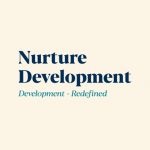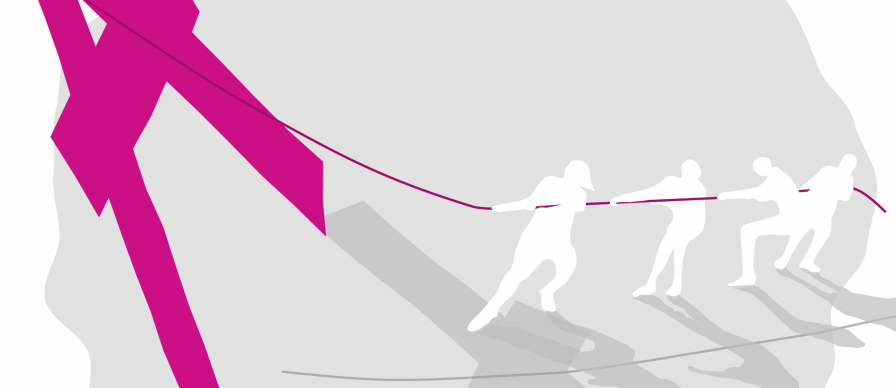Co-authored by Nick Gardham, Community Organisers and Cormac Russell, Nurture Development
Self-organised, community driven efforts typically happen below the radar of policy makers and print media, and so often go unnoticed in general society. That all changed in the face of COVID-19. The relationships of trust and mutuality between local people that have emerged over the last six weeks across the U.K., have highlighted how regular citizens can unite. They have quickly and competently engaged in acts of solidarity, supporting each other in the most challenging of times, and already are beginning to work towards civic and economic renewal.
We have had the pleasure of walking with, and learning, from many citizen leaders and community supporters across the U.K. and their message is resoundingly clear, “what unites us, is greater than what divides us”. In this post we share a summary of the insights, that have emerged during our conversations at the grassroots, as well as what practitioners and community leaders have told us, they consider to be the best means for outside actors tosupport their hyperlocal community efforts.
At the onset of the COVID-19 crisis the role of the State was first and foremost to address the real threats that the pandemic posed to the economic security of citizens by putting in place the support packages and programmes to protect all resident in the U.K; including business and workers. Whilst these programmes were being designed and implemented the community also went about its ‘business’ ensuring neighbours were cared for, and those at the edge had the necessary food, resources and social supports needed to remain well and safe.
The last number of weeks have been an important reminder that democratic life usually begins locally, around kitchen tables more so than boardroom tables. Emerging from the ground up this was a citizen organised, not professionalised response to the public health crisis.
The emergent civic action that we are describing here should not be confused with volunteering, albeit that citizens are voluntarily (consentually) contributing to the wellbeing of their communities, they are not volunteering to do things for state, but out of allegiance to their neighbours. In so doing they are performing a critical democratic role that cannot be fulfilled by the state or third sector organisations.
Of course voluntarism is a critical part of civic life, but it is still just a subset of how citizens and their associations contribute. Beyond voting, volunteering and complying with important state directives, citizens have found ways to become first responders to each other, and to reduce pressure on an ever more burdened system. Through their acts of neighbourliness, care and compassion, street organising, and advocating for new social norms during this public health crisis, they have nurtured social cohesion, public health, safety and the wellbeing of neighbourhoods in a way that will continue long after this crisis has passed and for which there is no institutional proxy.
It should also be noted that neighbourhood supports have extended in reach to those considered most susceptible to COVID-19. Indeed, while doing so communities are reframing the narrative of “vulnerability” recognising that some of their neighbours are indeed vulnerable to the direct and indirect impacts of the pandemic, while also remembering that they have contributions to make to the wellbeing of their community, and need to be included and well as helped.
This growing neighbourhood response is fostering a deeper sense of place – new relationships and connections between local people are being formed. Assumed ‘unmet’ need is being addressed as people who previously knew each other and broaden their circles to include neighbours that they previously had not known, hence developing a renewed sense of care and neighbourliness. There will of course be additional needs that will be best addressed by outside agencies, but such agencies can’t know what a community needs until they first know what the respective community has. And that means mobilising at grassroots level through processes of community organising and community building to find out.
As the Government considers how best to support these ongoing and invaluable grassroots citizen-led efforts, they will have to grapple with the following question:
How best can outside agencies respectfully walk alongside local communities to strengthen their community organising and community building efforts?
In our collective view, Government’s attention needs to turn towards how best to precipitate the deepening of hyperlocal efforts of communities from the ground up, what NESTA have previously called mass localism, and not towards scaling standardized programmes from the top down. The political fallout of taking such a top down approach, especially at this time, would be grave in our opinion. That said, it is encouraging to see that Government and allied institutions are eager to support grassroot efforts, and are open to learning how best to do so.
In supporting neighbourhood responses to the coronavirus, we believe trust should be primarily placed in neighbourhood groups to determine how money should be spent and other supports deployed. Power, both in the form of money and decision-making should be transferred to the most local level, following well established and respected principles of “subsidiarity”. The principle that a central authority should only perform tasks which cannot be performed at a more local level.
Therefore, we would assert that Government must ideally find ways of working with neighbourhood groups who hold trust and relationship at the local level in preference to large corporate not for profit institutions. Since large Third Sector Organisations are not a proxy for neighbourhood groups.
In summary, specifically with regard to funding of neighbourhood responses, we believe that neighbourhood funds should be allocated on a neighbourhood by neighbourhood basis with spending determined by those who live there. This has been done before in the UK through the Community First Initiative; as it has in the U.S. through the Grants for Blocks Initiative; The Seattle Neighbourhood Grants Initiative; and the Nebraska Community Foundation model. All of these are examples of how to cascade funds upstream into the hands of the people who require the resources and know best how to use them for maximum impact on the ground.
Government should invest in what is strong and what’s working based on the real and lived experience of those who live in that place. Not a set of assumptions centrally determined.
In short, outside agencies need to respect local efforts, trust those that are active, listen and develop the relationships as they determine how to work alongside neighbourhood organisations, and offer funding from a position of being on tap; not on top.
DO
- Create neighbourhood chests/pooled budgets that issue small amounts – between £100 and £500
- Replicate proven place based approaches that give funds to local people such as the Community First Programme, The Seattle Neighbourhood Fund/Grants for streets, LEADER Program for rural areas and Big Lottery Our Place Initiative in Scotland.
- Call for, where appropriate, trusted fiscal agents that can take on financial oversight functions
- Do keep criteria light and encourage local groups to develop open and transparent criteria that ensures openness and inclusion
- Do encourage story sharing and place value on collecting stories for the future
- Do encourage local match of money in the form of social capital. Each hour pledged by a local group valued at £15 per hour. This ensures funding becomes a match and practical support of citizens’ collective efforts.
- Do use measures that demonstrate the impact of increasing neighbour to neighbour social capital
- Trust local neighbourhood groups to make the right decisions at the right time
- Insist that outside agencies (where they are required) identify and understand the assets and priorities of neighbourhoods; not impose their own. Take affirmative action to advantage local applications.
DON’T
- Centralise funding and administer it through large national Not for Profits
- Replicate practices that have been shown not to get funds to people on the ground
- Assume what is needed without listening to those who are directly affected by an issue or with lived experience on the ground.
- Impose criteria that stifle local inventiveness or stimulate outside agencies to develop new programmes that communities do not want.
- Incentivise local neighbourhood groups to compete with each other e.g. where one local football has to prove they are more deserving than another
Co-authored in partnership with Cormac Russell of Nurture Development.





